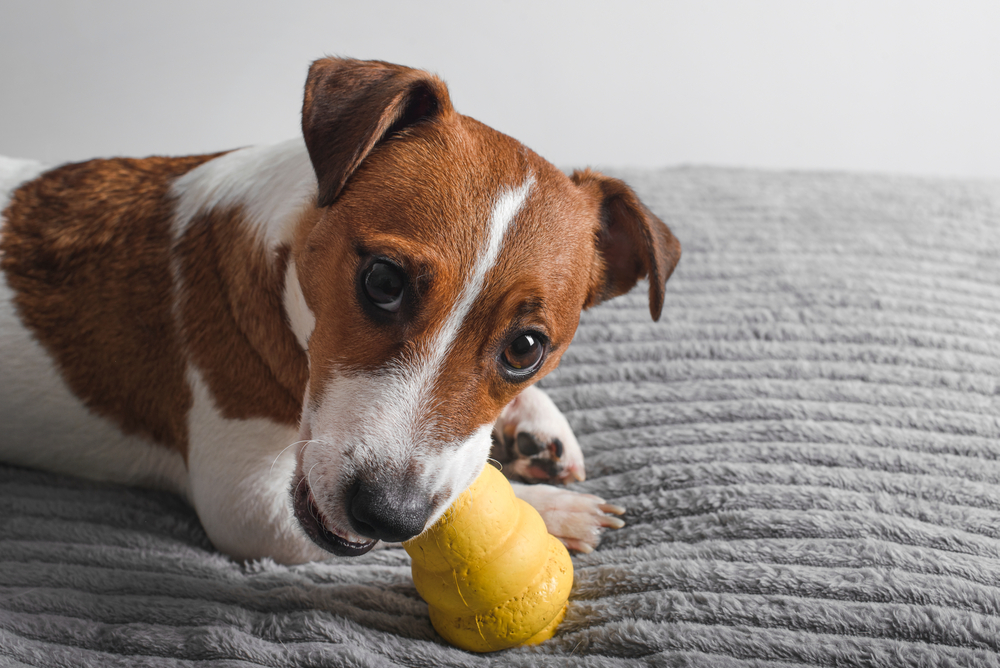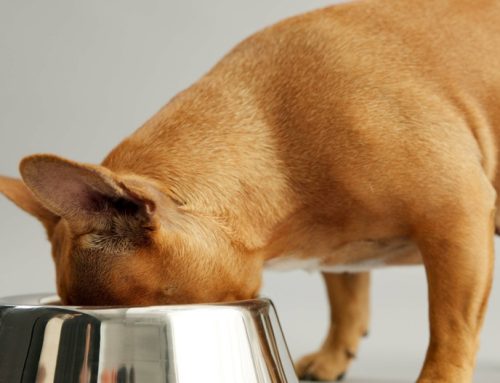Gifts to buy, menus to plan, parties to host or attend—what is missing from your holiday to-do list?
Oh yes! Your pet!
Your four-legged friend deserves to experience the holidays, too. But, despite food being a universal love language between pets and owners, improperly indulging your pet during the holiday season can turn your festive fun into a nightmare. Fortunately, you can treat your pet in many healthy, safe, and flavorful ways.
The “Naughty List:” Keep these foods away from your pet
Every November and December, Companion Care Animal Clinic and veterinary emergency centers throughout the country see a spike in pet poisonings and food-related illnesses or emergencies, when pet owners, family, and friends unknowingly feed pets harmful foods, or opportunistic pets steal toxic ingredients from counters, tabletops, and trash cans.
Pets can become extremely or irreversibly sick after consuming only small quantities, so ensure to keep toxic foods out of your pet’s reach. Our holiday food naughty list includes:
- Meat bones
- Corn on the cob
- Turkey skin, fat, or pan drippings
- Cured ham
- Gravy and sauces
- Dishes containing garlic, onion, or leeks
- Raisins and grapes
- Macadamia nuts
- Yeast dough
- Alcohol and caffeine
- Chocolate
- Foods prepared with xylitol, a sugar substitute
The “Nice List:” Healthy and safe holiday foods for pets
Fortunately, many safe and healthy foods can be shared with your pet that, unlike most holiday dishes, require little to no prep time. Our nice list includes foods with various flavor profiles and serving options, so we offer something for every pup palate and finicky whisker.
- Skinless white-meat turkey — Good news for pets—they can still indulge their inner carnivore during the holidays, albeit with a few restrictions. Ensure your pet’s turkey portion is free from skin, fat, dark meat, and gravy, which can trigger pancreatitis, and bones, which can lead to choking or internal injury. Plain turkey is a lean highly digestible protein that is a safe, satisfying option for all pets—including those with sensitive stomachs.
- Green beans and peas — Bite-sized green beans and peas are fun, flavorful, and fiber-filled low-calorie treats that can be served raw, frozen, or steamed. Ensure you serve only plain vegetables (i.e., no seasoning or salt) to prevent gastrointestinal (GI) upset. Judge carefully the amount of peas you serve to your dog, as these small spheres can pose a choking hazard. Serve these treats in a slow-feeder bowl or food-stuffed hollow toy to ensure your pet eats slowly.
- Pumpkin — Pumpkin’s healthy fiber content and sweet flavor can be a natural remedy for soft stools, but your pet will appreciate a small helping during the holidays, too. Pets can safely enjoy fresh roasted pumpkin, with the seeds and skin removed, but most owners prefer to feed their pet the canned form. Ensure you buy your pet 100% pure pumpkin and not pumpkin pie filling, which contains sweeteners, seasoning, and other undesirable ingredients.
Because pumpkin can be powerful, we recommend limiting your pet to a tablespoon per 10 pounds. Alternatively, you can blend pumpkin with nonfat plain Greek yogurt or a dab of xylitol-free peanut or almond butter to add flavor and interest.
- Apple slices — Most pets love apples for their sweet flavor and satisfying crunch, but use caution when serving up this seemingly harmless snack. Apple seeds contain small amounts of toxic cyanide, while the cores pose a choking hazard and can result in an intestinal blockage. Finally, apples are naturally high in sugar, so share sparingly to avoid canceling out their health benefits.
- Sweet potato — Pets love plain sweet potatoes for their natural sweetness and earthy flavor, while pet owners love them for their impressive nutrient profile—including a low glycemic index that won’t spike your pet’s blood sugar. Always bake or roast sweet potatoes to ensure maximum digestibility and feed them to your pet plain (i.e., no added salt, sugar, or seasoning).
- Cranberries — Give your pet’s bowl a pop of color and flavor with a few whole cranberries. Not every pet enjoys these sweet-but-tart gems, but those who do also receive an antioxidant boost. Like other pet-safe berries (e.g., blueberries, raspberries), cranberries contain immune-boosting compounds that fight off oxidative damage in the body. Plus, they’re fun to eat!
Holiday entertainment: How to prepare a long-lasting treat for your pet

While you could simply hand your pet their holiday treat, bite-sized pieces are usually gone in a flash and leave your pet begging for more. Here are a few simple ways to ensure your pet’s treat lasts longer, and provides them with greater enrichment and you with more uninterrupted peace.
- Fill a hollow toy — Flexible food toys such as Kongs, West Paw Toppls, and other hollow shapes extend meal times, because the pet needs to lick and chew to reach the concealed food.
- Smear soft foods on a lickable mat — Brachycephalic (i.e., flat-faced) dogs and cats enjoy the sensory experience of textured food-grade silicone mats. And, because licking is naturally self-soothing, these mats can help calm nervous or anxious pets.
- Freeze toys for extended enjoyment — Once your pet has mastered the traditional food-filled toy, try freezing prepared toys and mats for long-lasting entertainment.
From gift-giving to time-honored traditions and festive foods, the holidays are meant to be shared. Fortunately, you do not need to leave your pet out of the food-related fun. Ensure your pet has a happy and healthy holiday season by using our guide to create your own pet-safe grocery list—don’t forget to check it twice—and contact Companion Care Animal Clinic for all your pet’s veterinary care needs.







Leave A Comment